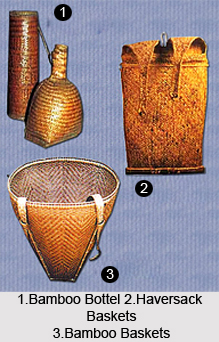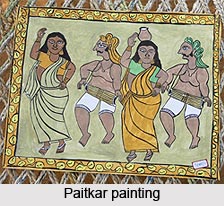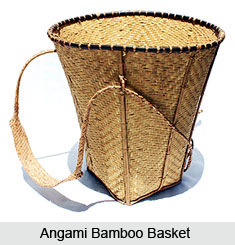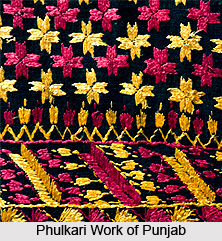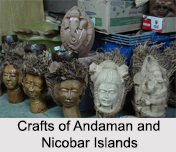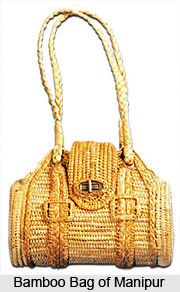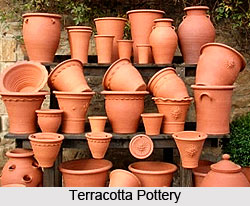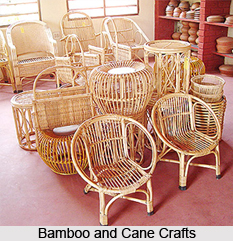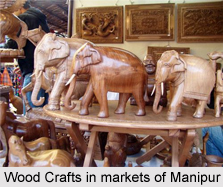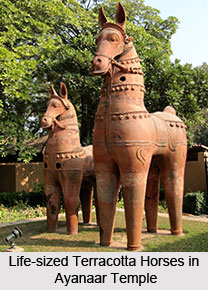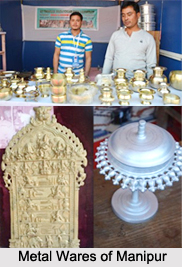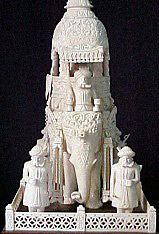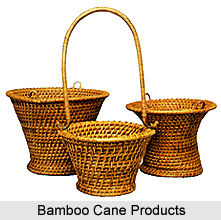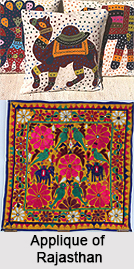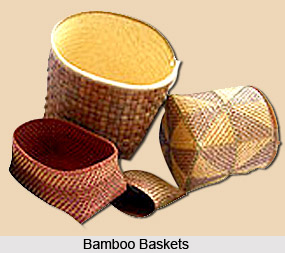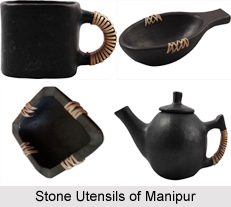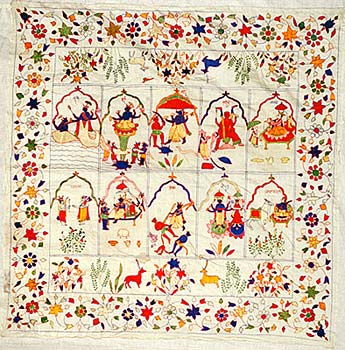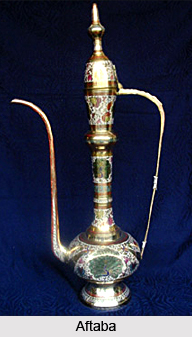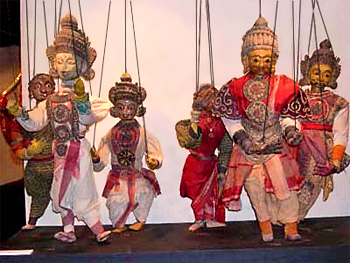Bandhani work is very popular handy craft all over India. After processing Bandhani work results into a variety of symbols including, dots, squares, waves and strips. Bandhani work involves tying and dyeing of pieces of cotton or silk cloth. The main colours used in Bandhani are natural. In fact all colours in bandhani are dark. At present, Rajasthan and Gujarat in India are the most large centres of tie and dye textile. Each state has particular areas and each caste and each tribe has its special design.
History of Bandhani
The term "bandhani" derives its name from the Hindi word Bandhan which means tying up. Bandhani is an ancient art practised by people mainly of Rajasthan and Gujarat. Jaipur, Udaipur, Bikaner, Ajmer and Jamnagar are among the important centres producing odhnis, saris and turbans in bandhani. The wide variety was evolved over the centuries because of its close links with the religious and social customs of different people.
The work of Bandhani has a rich history and the work was initiated exclusively by the Muslim Khatri Community of Kutchh. Those Muslim Khatri women carried out the tradition from one generation to another and became the janitor of this art from.
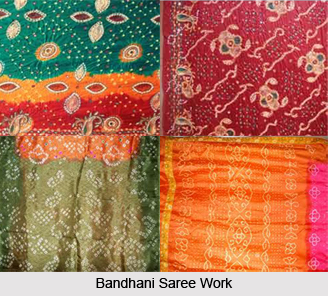 Making of Bandhani
Making of Bandhani
The production of Bandhani fabric is very tedious but appealing. Dyeing is accomplished by the tie-resist method as in bandhana and laheria where the patterns are made up of innumerable dots and weaves respectively. The manufacturing of the Bandhani work is usually performed both by men and women. Men do the dyeing while women do the tying, which is very intricately done, each dot is as tiny as a pin-head. The cloth is first washed and bleached to prepare it for absorbing the dyes. After this, it is then sent to the bandhani, the women who does the tying, lifts a small portion of the fabric and tightly ties a thread around it. The tied textiles are then dipped in the light colour first while the tied areas retain the original ground colour. If a second dye is required, the areas to be retained in the first dye are tied for resist and the cloth dipped in a darker dye. This process is repeated, if several colours are to be combined.
Laheria Style in Bandhani
Laheria in Bandhani is quite in style and refers to the wavy pattern of a fabric processed in the tie and dye technique. The material is rolled diagonally and certain portions resisted by lightly binding threads at a short distance from one another before the cloth is dyed. The process of dyeing is repeated until the requisite number of colour is obtained. For a chequered pattern the fabric is opened and diagonally rolled again from the opposite corners, the rest of the process remains the same. The printing of residue on cloth with coloured powder, gold or silver dust is known as khari or tinsel work.
Sevo Bandhavo in Bandhani
Tying of the border in the Bandhani is a special process known as sevo bandhavo. The border is tied according to the desired pattern by passing the thread from one end to the other in loose stitch so as to bring the entire portion together by pulling the thread from one end. The border portion is then covered up. This process is especially used to make sarees and have broad matching and contrasting borders. The style is applied to the pallus too. This tradition in India of Bandhani print dresses is practised in Jamnagar, in the state of Gujarat and also in Rajasthan.
Bandhani Shawls
Bandhani has become a popular tie and dye all over the country. The art work is used for various occasions and imparts new meaning. Bandhani Woollen shawls are tie - dyed work which are presented by the khatris and worn by Rabari women. Suhagadi - yellow dots on chocolate brown is worn after marriage and before a woman first born, while the satbanteli red dots on black is worn after her first child. The bagida pattern and colour combination is traditionally worn only by harijan women. The common design in Bandhani is chains of grains represented by dots on the body called the dana pattern.
Bandhani designed apparels
The work of Bandhani has attracted not only women but it is popular among the men too. The women apparels possess beautiful bandhani work and the dresses of men also feature the opulence of the art form. The garments that take in the gorgeous work of Bandhani include Sarees, woollens, shawls, scarves, handkerchiefs, dupattas, odhnis, turbans, suhagadi, satbanteli, Bed-spreads, table cloths, jajams (floor-coverings), quilt covers, bed - cover, lungis, chunaries and pillya.
